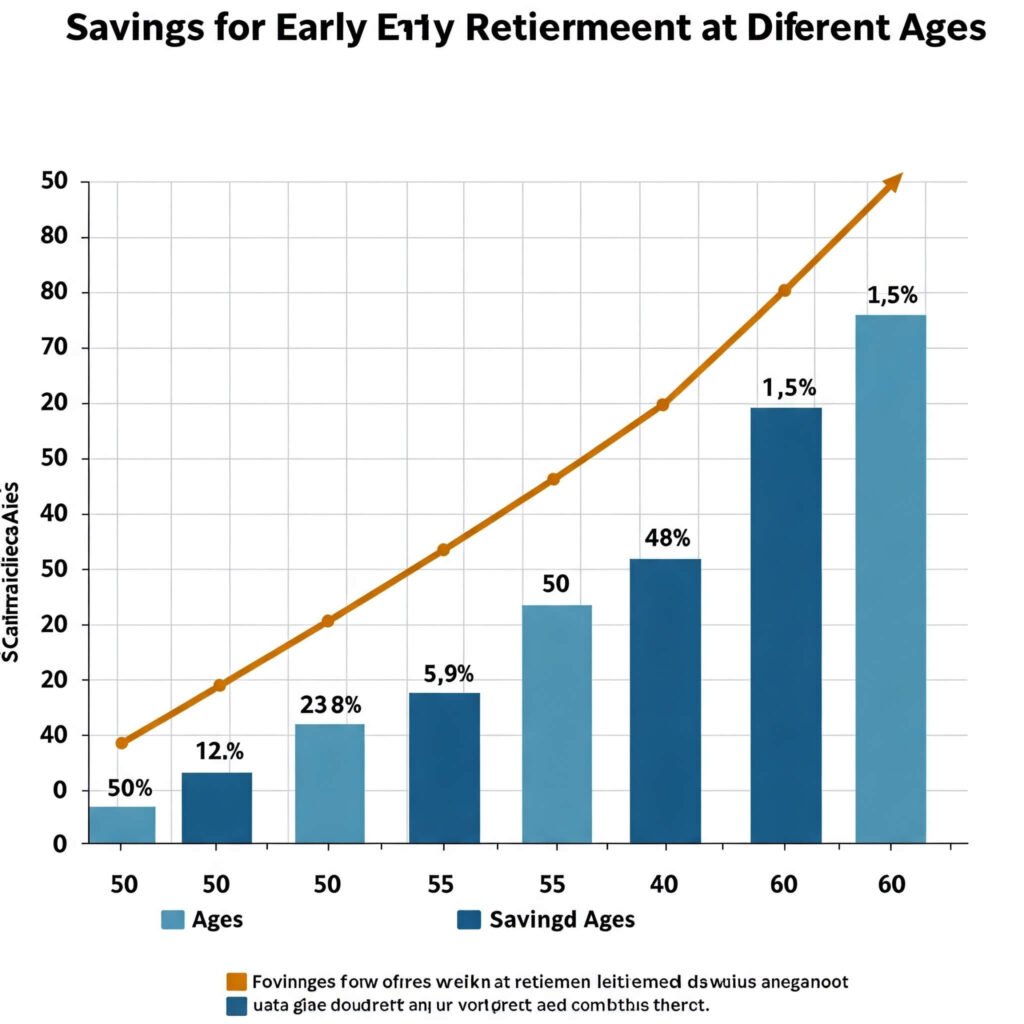
Why Use an Early Retirement Calculator?
An early retirement calculator is a powerful tool that estimates when you can retire based on your financial situation. According to a 2024 survey by the Employee Benefit Research Institute, 46% of workers underestimate how much they need to retire early. A calculator helps you avoid guesswork and create a realistic plan.
The Benefits of Planning Early
Using a calculator early lets you adjust your savings or lifestyle to hit your goal. For example, Mia, a 34-year-old marketing manager, used a calculator and realized she needed to save $1,500 more monthly to retire at 50. She adjusted her budget and is now on track.
How an Early Retirement Calculator Works
Early retirement calculators estimate the savings needed to cover your expenses without a paycheck. They factor in:
- Current Savings: Your existing retirement accounts (401(k), IRA, etc.).
- Annual Expenses: How much you’ll spend in retirement (housing, travel, healthcare).
- Investment Returns: Expected growth of your savings (e.g., 6-8% annually).
- Retirement Age: When you plan to stop working.
- Life Expectancy: How long your savings need to last.
Most calculators use the 4% rule, assuming you can safely withdraw 4% of your savings annually. For instance, $1 million in savings allows $40,000/year withdrawals.
Outbound Link: Try a free early retirement calculator at NerdWallet.

Step 1: Gather Your Financial Data for the Calculator
To use an early retirement calculator effectively, collect accurate data. Here’s what you need:
- Current Savings: Check balances in savings accounts, 401(k)s, IRAs, and other investments.
- Monthly Expenses: Estimate retirement costs, including housing, food, and hobbies.
- Income Sources: Include pensions, Social Security, or side hustles.
- Investment Growth Rate: Use a conservative estimate (e.g., 6% for stocks).
For example, Alex, a 40-year-old engineer, tracked his expenses and found he’d need $50,000/year in retirement. His calculator showed he needed $1.25 million to retire at 55.
Step 2: Choose the Right Early Retirement Calculator
Not all calculators are equal. Pick one that fits your needs:
- Basic Calculators: Good for quick estimates (e.g., Bankrate’s retirement calculator).
- Advanced Calculators: Include variables like inflation and taxes (e.g., FIRECalc).
- App-Based Tools: Apps like Personal Capital offer ongoing tracking.
Pro Tip: Test multiple calculators to compare results and ensure accuracy.
Outbound Link: Explore advanced calculators at FIRECalc.
Step 3: Adjust Your Plan to Reach Early Retirement
Once you run the numbers, your early retirement calculator may show you’re not on track. Here’s how to close the gap:
Increase Savings
- Max Out Retirement Accounts: Contribute the maximum to your 401(k) or IRA.
- Automate Savings: Set up monthly transfers to investment accounts.
- Cut Expenses: Reduce discretionary spending, like dining out.
Boost Income
- Side Hustles: Freelance or start a small business.
- Career Moves: Negotiate a raise or switch to a higher-paying job.
For instance, Sarah, a 38-year-old teacher, increased her savings by $500/month by tutoring part-time, cutting her retirement timeline by five years.
Step 4: Factor in Risks to Your Early Retirement Plan
Early retirement calculators assume steady growth, but life isn’t predictable. Consider these risks:
- Market Volatility: A stock market crash could reduce your savings.
- Healthcare Costs: Unexpected medical expenses can drain funds.
- Inflation: Rising costs may increase your retirement expenses.
To mitigate risks, diversify investments and keep 1-2 years of expenses in cash. For example, John, a 45-year-old consultant, added bonds to his portfolio to reduce risk.
Outbound Link: Learn about diversification at Investopedia.

Step 5: Revisit Your Early Retirement Calculator Regularly
Your financial situation changes over time, so update your calculator annually. Recalculate if:
- You get a raise or change jobs.
- Your expenses or goals shift.
- Market conditions change significantly.
Lisa, a 42-year-old nurse, recalculated after a promotion and found she could retire three years earlier than planned.
Key Takeaways for Using an Early Retirement Calculator
- Know Your Numbers: Gather accurate data for savings, expenses, and growth rates.
- Choose Wisely: Use a reliable calculator suited to your needs.
- Act on Results: Increase savings or income to meet your goal.
- Plan for Risks: Diversify investments and account for uncertainties.
- Stay Consistent: Revisit your calculator yearly to stay on track.
An early retirement calculator is your roadmap to financial freedom. Run the numbers today and take the first step toward retiring on your terms!











































